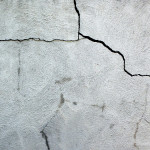It’s that time of year again for your annual foundation checkup. You’re likely wondering what you need to look out for, aren’t you? Be on alert for signs of settlement cracks, moisture intrusion, and mold growth – these could be red flags for underlying issues. But that’s not all you need to consider. What about drainage systems and grading around the foundation? Ever thought of those as crucial elements in maintaining structural integrity and preventing future damage? There’s quite a bit more to learn about this essential homeowner task.
Key Takeaways
- Inspect for cracks, bulges or shifts in foundation walls and floors, signs of settling or heaving.
- Check for signs of moisture intrusion, including damp spots, musty smells, mold growth or degradation in insulation.
- Review detailed records of past inspections, maintenance schedules, and any recent foundation repairs or modifications.
- Evaluate grading around the foundation, drainage systems, soil moisture levels, and ensure gutters direct water away from the foundation.
- Monitor for signs of pests such as termites, rodent entry points, ant trails, and assess the effectiveness of existing pest control measures.
Understanding Foundation Basics
Ever wondered why your home’s foundation is so critical? It’s not just about keeping your house upright. Your foundation, whether it’s a slab, crawlspace, or full basement, is designed to shoulder your home’s weight, resist soil movement and pressures, and combat weather conditions.
Understanding foundation types is your first step. Slab foundations are a single layer of concrete, typically laid over a bed of crushed gravel for improved drainage.
Crawlspace foundations are built above the ground, providing space for utilities and prevention against termite infestations.
Basement foundations are for colder climates where the foundation needs to be buried below the frost line to prevent shifting during freeze-thaw cycles.
Soil stability is another vital aspect. Every foundation relies on the soil it’s built on. Your foundation’s health can be compromised if the underlying soil shifts, expands, contracts, or erodes.
Different soil types can handle varying amounts of pressure and water, affecting foundation stability. For instance, clay soils can expand when wet, causing significant foundation problems.
That’s why a soil assessment is necessary before laying your foundation.
In essence, understanding your foundation and soil stability is crucial in maintaining your home’s integrity.
Importance of Annual Checkups
A staggering number of homeowners overlook the need for annual foundation checkups. However, neglecting this simple yet crucial step can lead to serious structural damage, which is far more costly to rectify.
The health benefits of a yearly examination aren’t to be underestimated. With regular checkups, you can identify minor issues before they escalate into major ones that can jeopardize the stability of your home, and potentially your family’s safety.
For instance, mold growth, often a sign of a compromised foundation, can cause respiratory issues and other health problems.
From a financial perspective, annual foundation checkups provide significant cost savings. Early detection of problems means less expensive repairs down the line.
Think of it as preventive maintenance for your home. By investing a small amount each year in a foundation checkup, you’re avoiding the potential for a massive repair bill in the future.
Identifying Common Problems
You mightn’t know what signs to look for when it comes to foundation problems. But don’t worry, you’re not alone. Many homeowners grapple with this confusion. A few common issues can alert you to potential problems with your foundation.
Settlement cracks, for instance, are a key indicator. These are visible disruptions in your foundation that often appear as zig-zag lines across your walls or ceilings. They’re typically the result of soil shifting under your foundation, causing parts of your home to settle unevenly. Ignoring these signs could lead to severe structural damage over time.
Another common issue is moisture intrusion. This might materialize as damp spots on your walls or a musty smell lingering in your basement. It’s a telltale sign that water is finding its way into your home, often due to cracks in the foundation.
If left unchecked, this can foster mold growth and further erode your foundation.
Visual Inspection Techniques
To properly assess your foundation’s condition, visual inspection techniques prove crucial.
You’ll want to start by examining your foundation for crack patterns. Cracks can be a normal part of settling, but certain patterns might indicate more serious underlying issues. Look for horizontal cracks or ones that form a stair-step pattern. These may suggest deeper problems, such as soil pressure or water damage.
Next, check for any signs of moisture. Moisture levels are a key factor in maintaining the integrity of your foundation. If you spot any damp spots or pooling water, it’s a red flag. It means water isn’t draining properly and could potentially weaken your foundation over time.
Use a moisture meter if you have access to one, as this can provide more accurate readings.
Also, don’t forget to inspect the exterior of your foundation. Look for bulges or shifts in the foundation walls. These could be early signs of a failing foundation.
Recognizing Serious Issues
Understanding the signs of serious foundation issues isn’t just about spotting cracks or damp spots; it’s also about interpreting what these symptoms might mean.
It’s crucial to conduct a detailed cracks analysis. If you notice horizontal cracks, it’s a serious sign. These often indicate pressure from soil expansion or contraction, suggesting an issue with soil stability.
Vertical cracks, while typically less concerning, can still evolve into significant issues, particularly if they grow in width or length.
Keep an eye out for stair-step cracks in brick or concrete block walls too. These may denote differential settling, another serious soil stability issue.
Don’t ignore damp spots either. Persistent dampness indicates water intrusion, which can erode your foundation over time.
Moreover, if you notice doors and windows sticking, or uneven floors, it’s a red flag. These symptoms often indicate that your foundation is shifting, a problem that can lead to significant structural damage.
Seeking Professional Help
Spotting the signs of potential foundation issues is just the first step. The next is seeking professional help. It’s crucial to ensure that the contractor you select has the right qualifications. Not all contractors are foundation specialists. These experts have specific knowledge and experience dealing with foundation problems, making them the ideal choice for your home’s checkup.
When looking for a contractor, don’t just focus on their qualifications. You also need to consider their practical experience. Ask for references and check out some of their previous work. You’ll want a contractor who’s tackled similar issues before and has a track record of successful repairs.
Remember, the price isn’t everything. While it’s understandable to lean towards cheaper options, you don’t want to compromise on quality. A poorly repaired foundation could lead to more serious issues down the line. So, invest in a contractor who can do the job right the first time.
In the end, it’s about protecting your home. By choosing a qualified foundation specialist, you’re taking an essential step towards ensuring the longevity of your property. Don’t skip or rush this process. Your home’s foundation deserves expert care.
Preventative Maintenance Tips
After securing the services of a foundation specialist, you can further safeguard your property by implementing a series of preventative maintenance measures. Implementing these measures can help to mitigate potential structural damages and ensure the longevity of your building’s foundation.
Firstly, it’s essential to engage in regular crack repair. Even the smallest cracks shouldn’t be ignored. They can grow over time, leading to substantial structural damage. Regular inspections and prompt repairs help maintain the integrity of your foundation.
Drainage solutions also play a vital role in preventative maintenance. Poor drainage can lead to water pooling around your foundation, which can cause significant issues over time. Ensure your property has an effective drainage system in place to divert water away from the foundation.
Soil stabilization is another crucial aspect to consider. Soil that’s too loose or too compact can negatively impact your foundation. Regular checks and appropriate measures can ensure your soil remains stable and supportive.
Lastly, don’t overlook the importance of seasonal maintenance. Changes in weather conditions can affect your foundation, and it’s crucial to adapt your maintenance routine accordingly.
Following these tips will help you maintain a strong and stable foundation for years to come.
Frequently Asked Questions
What Are the Costs Associated With Foundation Repair?
The cost breakdown for foundation repair can vary greatly depending on the severity of the damage.
You’ll want to consider different repair options, which can range from minor crack filling to major structural work.
Costs can start in the hundreds and skyrocket into the thousands.
It’s important to get a professional assessment to understand your specific needs.
How Much Time Does a Typical Foundation Repair Take?
The duration of a typical foundation repair can vary significantly, depending on the severity of the damage and the repair techniques used.
If you’re conducting regular inspections, you’ll likely catch issues early, reducing repair time.
However, extensive damage could take weeks to fix.
It’s essential to consult with a professional to get an accurate timeline.
Can Foundation Problems Affect the Resale Value of My Home?
Absolutely, foundation problems can significantly impact the resale value of your home.
If you’re selling your house, it’s vital to get a foundation inspection. Potential buyers will likely do the same and, if issues are found, they may ask for a price reduction or even back out of the deal.
Are There Any Insurance Policies That Cover Foundation Damage?
Yes, there are insurance policies that cover foundation damage.
However, it’s crucial you read your policy’s fine print. Not all insurers provide coverage for all types of foundation issues.
Regular foundation inspections are key to catching problems early. If damage is due to negligence or lack of maintenance, you’re likely on your own.
But if it’s from a covered peril like a flood, you’re in luck. Always check with your insurance provider.
What Are the Potential Health Risks Associated With Foundation Problems?
When your foundation’s stability is compromised, it can pose serious health risks.
Cracks in the structure can lead to moisture build-up, promoting mold growth which can cause respiratory issues.
Structural integrity issues can also create uneven floors, increasing the risk of slips and falls.
Pests can infiltrate these spaces, spreading diseases.
It’s crucial you’re proactive in identifying and addressing these issues to protect your health.
Don’t overlook the importance of an annual foundation checkup. Keep an eye out for signs of serious issues like settlement cracks, moisture intrusion, and mold growth. Remember, visible cracks and musty odors can be indicators of underlying problems. Don’t hesitate to seek professional help if you spot any serious concerns. With regular inspections and preventative maintenance, you can ensure your home’s structural integrity and avoid future damage. Stay informed, stay safe.



